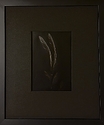I sometimes have issues with water marks on my negatives if I use photo flo and regular tap water. So I've gotten used to mixing some wetting agent with deionized water and use that as the final step. In order to not waste a bunch of fine, relatively expensive, purified water with each batch I reuse it. It works well.
I also keep some sort of C41 kit with developer, blix and stabilizer mixed and ready. Since the stabilizer, if I understand things correctly, is just a wetting agent and some extra chemicals for stabilizing the dyes it has occured to me that I should get rid of the photo flo and just use the stabilizer for my B&W and C41 images.
Is there any reason not to? Both my C41 and black and white chemicals fit snuggly into a box in my fridge, except I cannot fit both the mixed stabilizer and the mixed wetting agent solution at the same time.
I also keep some sort of C41 kit with developer, blix and stabilizer mixed and ready. Since the stabilizer, if I understand things correctly, is just a wetting agent and some extra chemicals for stabilizing the dyes it has occured to me that I should get rid of the photo flo and just use the stabilizer for my B&W and C41 images.
Is there any reason not to? Both my C41 and black and white chemicals fit snuggly into a box in my fridge, except I cannot fit both the mixed stabilizer and the mixed wetting agent solution at the same time.










 I assume you mean 50? I also have negatives and particularly B&W slides from my father from the 1960s and earlier that are still fine, whereas all color materials from the same era has faded significantly or severely.
I assume you mean 50? I also have negatives and particularly B&W slides from my father from the 1960s and earlier that are still fine, whereas all color materials from the same era has faded significantly or severely.
